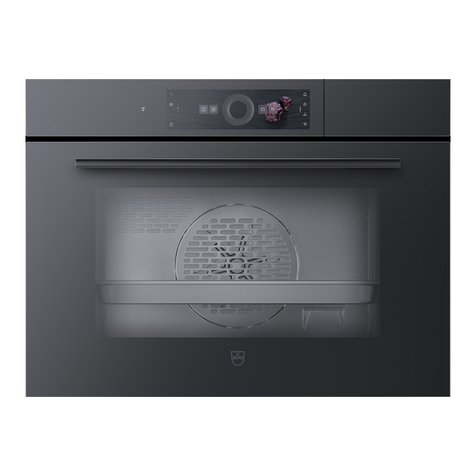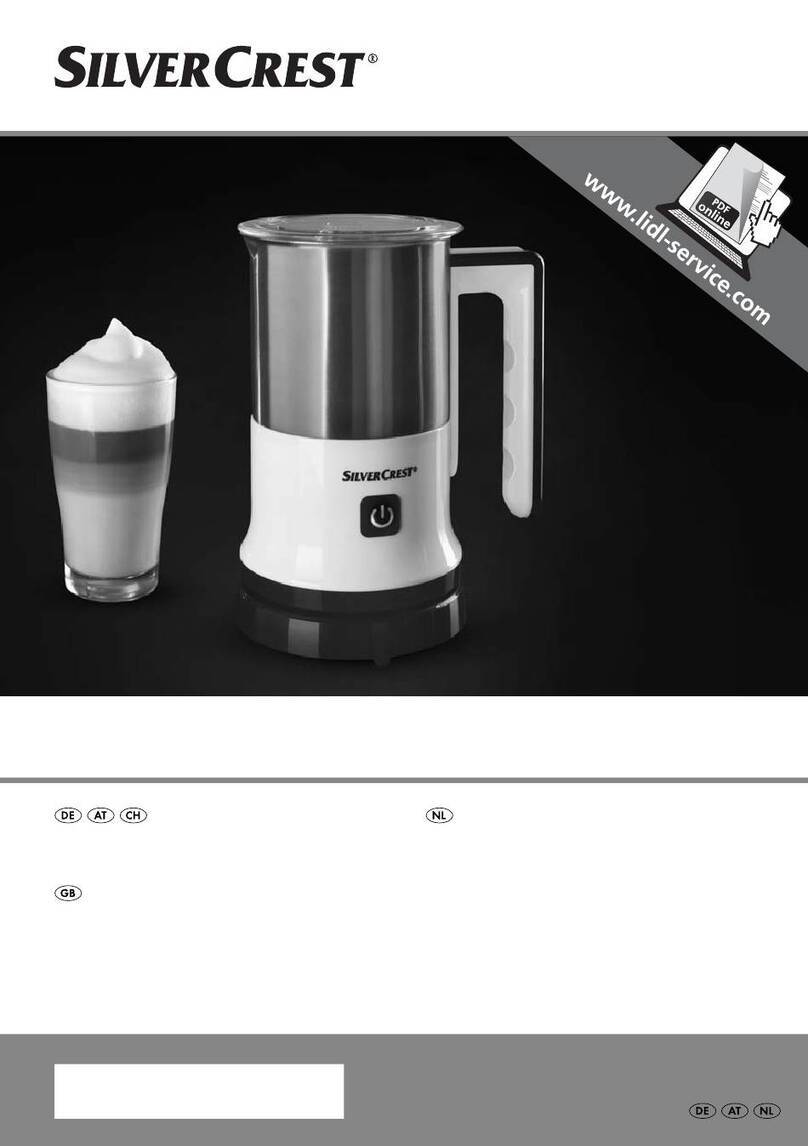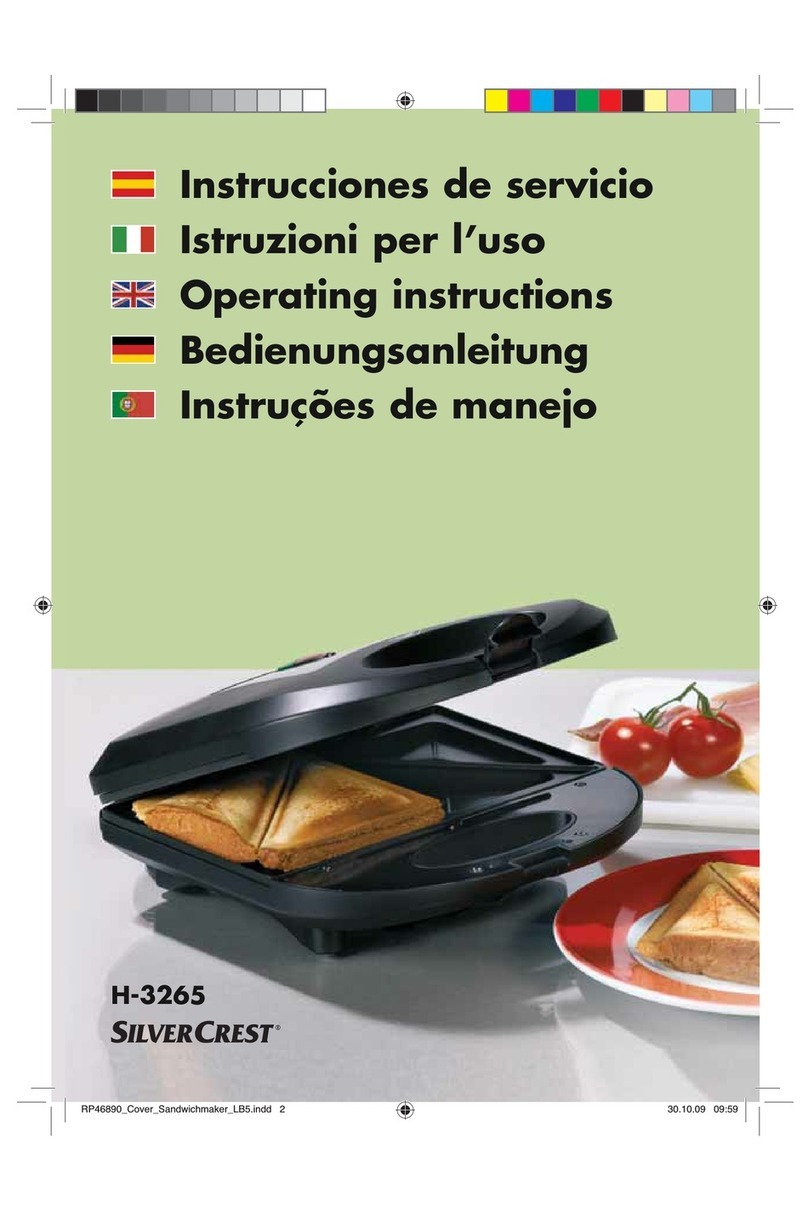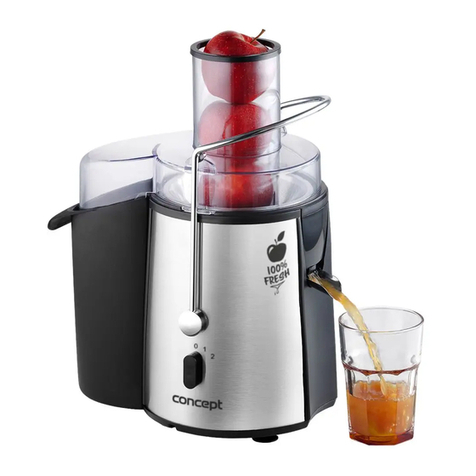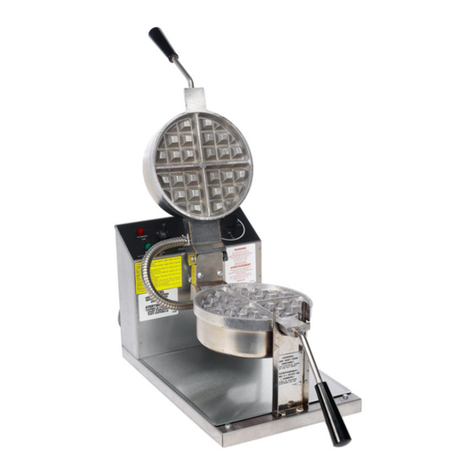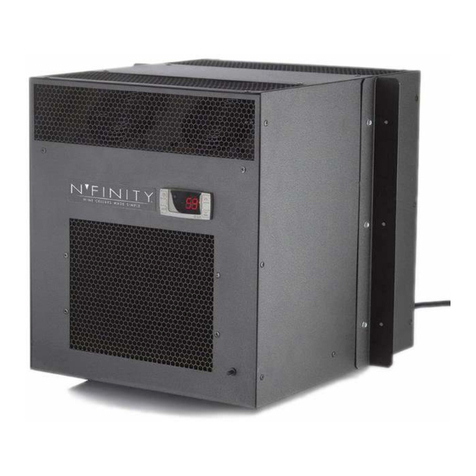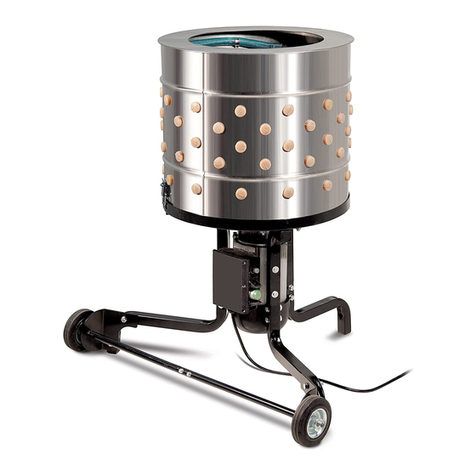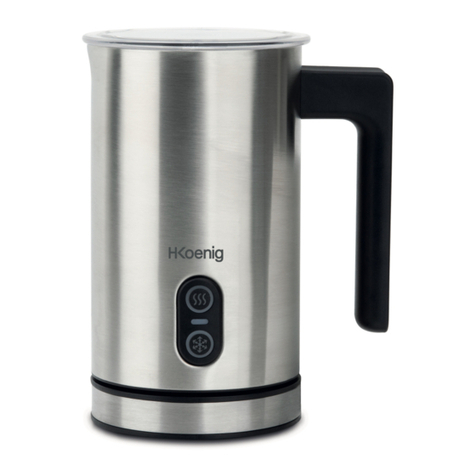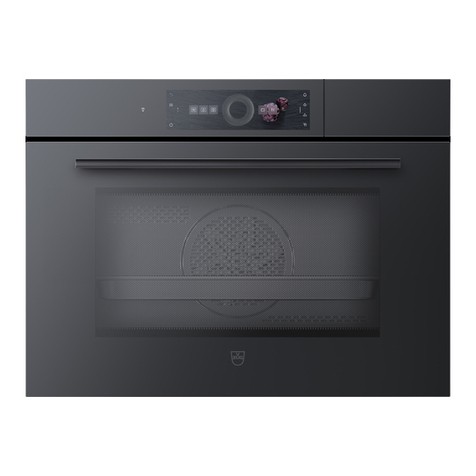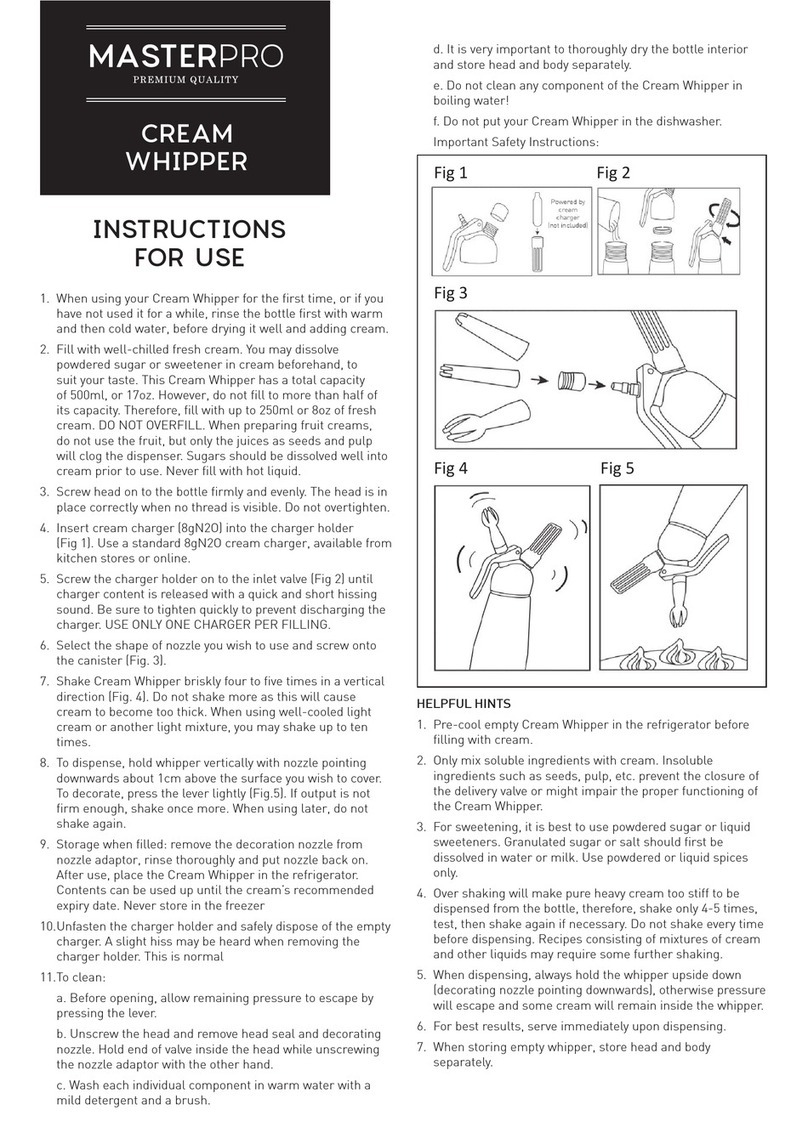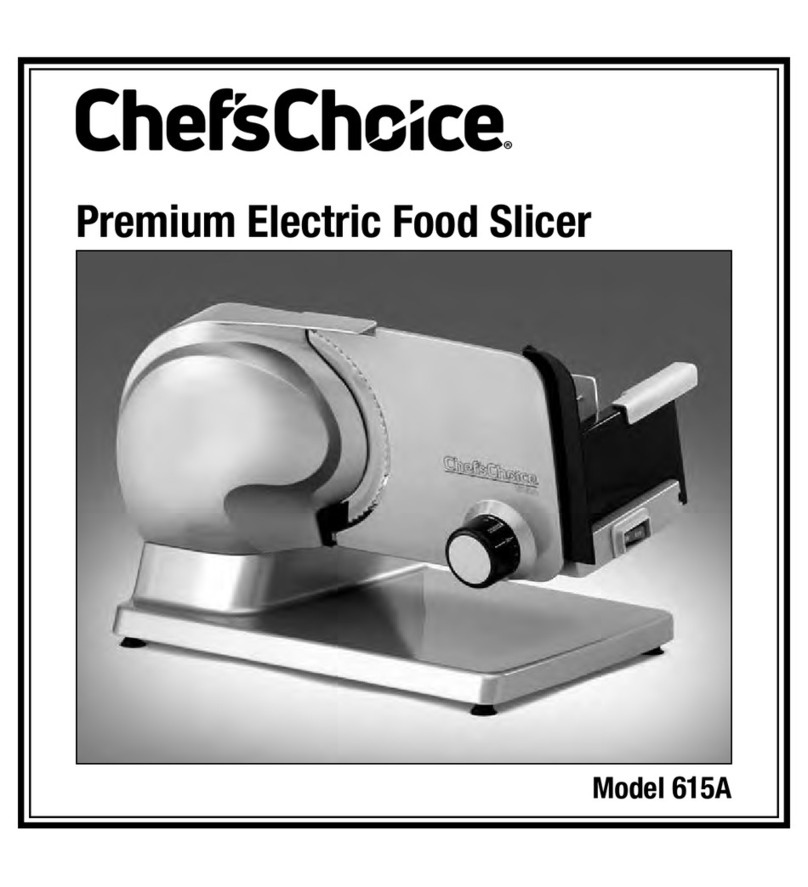Lavezzini UNICA manual

VACUUM PACKAGING MACHINES
VACUUM PACKAGING MACHINESVACUUM PACKAGING MACHINES
VACUUM PACKAGING MACHINES
«
««
«
UNICA
UNICAUNICA
UNICA
»
»»
»
INSTRUCTIONS HANDBOOK
INSTRUCTIONS HANDBOOKINSTRUCTIONS HANDBOOK
INSTRUCTIONS HANDBOOK

PAY ATTENTION!! IMPORTANT!!!!
WARRANTY RULES FOR OUR VACUUM PACKING
MACHINES
Dear Customer,
In order to avoid any misunderstanding of our warranty
policy, please note that the following item:
VACUUM PUMP
is not meant to be eplaced by the supplie , even if
within wa anty time, without a p evious etu n of
the disputed pa t.
A wrong use of vacuum pumps for 2 or 3 months (Pac ing
of hot, wet or corrosive products, so as liquids) can lead to
an anomalous internal dirtiness which prevents them from
a correct wor .
It’s therefore necessary to send these pumps bac to
manufacturer to get their accurate chec ing and/or
cleaning.
OUR COMPANY WON’T DELIVER ANY BRAND NEW
PUMP BEFORE RECEIVING THE DISPUTED ONE BACK!
As far as the other internal components (Transformers,
micro switches, electronic board..) are concerned, they do
not follow this general rule: they all are internal
components which do not suffer from wor mechanical
wear.

CHAPTER 1
Identification of the “Instructions Handbook”
The instructions handbook is a document issued by the manufacturing company and is an integral
part of the machine. This document is adequately identified for easy tracing and or subsequent
references.
All rights relating to the reproduction and disclosure of the information contained in this handbook
and the documentation quoted and or attached are reserved.
Aim of the document
This handbook contains the information necessary to the customer and assigned personnel for the
correct installation, use and maintenance of the machine at good conditions and at maximum
safety.
Safety precautions and manufacturer’s responsibility limits.
Every operator-machine interaction relating to the intended use of the machine and its overall life
cycle has been carefully and thoroughly analysed by the manufacturing company during the design
phase, construction phase and the drafting of the instructions handbook.
It is nevertheless understood that experience, adequate training and “common sense” of the
personnel operating on the machine are of primary importance. These requirements are therefore
considered indispensable during all machine operating phases and consultation of this handbook.
The non-observance of the safety precautions or specific warnings indicated in this handbook, the
use of the machine by unauthorized personnel, violate all safety standards regarding the design,
construction, and intended use of the machine and relieve the manufacturer from every liability in
the case of damage to persons or property.
The manufacturing company is therefore in no way responsible for the non-observance on the part
of the user of the safety precautions listed in this handbook.
Reference to standards
This documen has been drawn up in accordance wi h he indica ions given in he following:
-Attachment “I” of Machine Directive 89 392 CEE and subsequent issues: point 1.7.4;
-UNI EN 292 2 – 1992, point 5.5
MACHINE MOD. V HZ
SERIAL NUMBER
SHIPMENT DATE
TESTING ENGINEER
CHAPTER 2
How to consult and use the “Instructions Handbook”

Care of the instruction handbook
This document is an integral part of the machine. Preserve a copy of this instructions handbook for the
entire working life of the machine even if transferred or sold to third parties. Requests for further copies of
this document must be made by means of purchase order addressed to the manufacturing company.
To maintain the instructions handbook in good condition:
-use the instructions handbook taking care not to damage its contents. In particular, do not leave the
instructions handbook around during use and remember to return it to its proper place immediately after
consultation;
-do not remove, rip out or rewrite parts of the instructions handbook. Any changes required must be
referred to and subsequently supplied by the manufacturing company.
-keep the instructions handbook in a safe place, away from damp, heat and other environmental
elements which could damage it.
Symbols applied to the machine
The following safety precaution plates are applied to the machine:
DO NOT REMOVE OR DAMAGE THESE PLATES.
efinitions
The following definitions are used according to the
“Machine Directive” CEE 89 392 and subsequent issues:
-
Operator: person or persons assigned to machine
operation, adjustment, routine maintenance or cleaning.
-
User: body or person responsible for and or owner
of the machine.
Machine manufacturer identification data and positioning of the “CE MARKING”
plate.
Iden ifica ion of he manufac uring company as producer of he machine akes place in accordance wi h he
legisla ion in force by means of he following documen s:
-Declaration of conformity;
-CE marking;
-Instructions Handbook.
A special plate (fig. 1), applied to the machine is marked permanently with the following data concerning CE
MARKING:
o not remove the CE MARKING plate and/or replace it with a different one.
Should the CE MARKING plate be accidentally damaged, detached from the
machine or the manufacturer’s seal removed, the customer must compulsorily
and immediately inform the manufacturing company.
CHAPTER 3
WARRANTY
fig. 1

The manufacturing company engages, for 12 (twelve) months from the date of shipment and
direct delivery of the goods, to assure the customer or concessionaire the integrity and the good
working of the components regarding the above mentioned machine.
All machine components normally subject to wear, that is to say components in which use causes
a constant wear and tear, are not included in the warranty:
A. Electrical resistances – Teflon – Rubber gaskets – Chamber opening pistons – Sealing diaphragms – Air
filters – Oil filters – Oil change – Pump blades.
B. If the vacuum pump of a machine under warranty is sent to the manufacturing company because of
aspiration problems and malfunction, the manufacturing company has the right to check whether any
foreign bodies have been aspirated (liquids, solids, sauces, etc..). If this should be the case, the repair
(materials and the labour) will be duly charged, since the problem is not due to manufacturing defects,
but to customer negligence during use.
C. Possible problems linked to the electronic panel cards of the circuit will have to be examined by the
manufacturing company before sending the part which has to be replaced under warranty. A sudden
change in voltage, an electrical overfeeding, a disturbance in the external current network, could cause
damages which are not to be attributed to the manufacturing company.
D. Possible problems with pneumatic, structural, mechanical parts will be duly solved as per warranty terms
without any charge.
E. During the warranty period, for interventions under warranty, the replaced materials will not be charged,
while the labour will be duly charged. During the warranty period, for interventions not included in the
warranty for various reasons, both the materials replaced and the labour will be duly charged.
F. During the warranty period, should any external intervention of our technicians be requested, the travel
costs (to and from) will be fully charged independently of the reason behind the intervention.
G. Any interventions on the machines are to be carried out at the manufacturer’s premises both during the
warranty period and after the warranty period; we point out that no transport costs (to and or from) will
be refunded.
H. The transport for any materials sent to the manufacturing company, both during the warranty period
and after the warranty period, must compulsorily take place in ex works.
I. Any materials sent to the manufacturing company with transport charges will be automatically refused.
J. Any components considered defective (pump, electronic panel card, etc..) and mishandled by the
customer during the warranty period will not be considered under warranty. The manufacturing
company has the task of carrying out this function in a strict manner.
Do not remove the “CE MARKING” plate and or replace it with a different one. Should the “CE
MARKING” plate be accidentally damaged, detached from the machine or the manufacturer’s seal
removed, the customer must compulsorily and immediately inform the manufacturing company.
CHAPTER 4
General safety precautions
It is recommended to comply strictly with the following safety precautions:

-never touch the metal parts of the machine with wet or damp hands;
-do not pull the supply cable or the machine itself to disconnect the plug from the current outlet;
-children or unqualified personnel are not allowed to use the machine without supervision;
-electrical safety of the machine is ensured by its correct connection to an effective earthing as in
accordance with the electrical safety standards in force; it is necessary to check this fundamental
requirement and, if in doubt, ask for a thorough check by professionally qualified personnel. The
manufacturing company cannot be held responsible for possible damages caused by the lack of a plant
earthing;
-in the case of a possible damage to the safety earthing, disconnect the machine in order to prevent its
activation;
-always use fuses complying with safety standards in force, and with the correct value and with the
proper mechanical characteristics;
-do not make use of repaired fuses and avoid causing short circuits between the terminals located on the
fuse holder;
-the user of the machine must not replace its supply cable; in the case the supply cable is damaged or
needs replacing, refer only to the manufacturing company of the machine for its replacement;
-keep the cable away from hot parts;
-always switch off and disconnect the machine from the power supply before beginning any general
cleaning or washing operation;
-clean machine coating, panels and controls using soft and dry cloths, or cloths slightly soaked in mild
alcohol or detergent solution.
Obligations in the case of malfunction and/or potential danger
Operators are obliged to signal any deficiency and or potentially dangerous situation immediately to a direct
superior.
User obligations
The user must inform the manufacturing company immediately of any safety system defect and or
malfunction and of any presumed danger encountered. It is strictly forbidden to the user and or third parties
(excluding duly authorized personnel of the manufacturing company) to make modifications of any kind or
extent to the machine and its functions or to this technical publication. In case of malfunctions or danger
due to the non-observance of the above, the manufacturing company cannot be held responsible for the
consequences. It is advisable to request any modifications directly to the manufacturing company.
CHAPTER 5
INSTALLATION
Remove the packaging and check that the machine is undamaged. In particular, look for any possible
damages caused by transport. If in doubt, do not use the machine and refer to the manufacturing company.

Place
Position the machine in a place with low humidity percentage and far from heat sources.
O NOT INSTALL THE MACHINE IN AN EXPLOSIVE ATMOSPHERE.
ISCONNECT THE POWER SUPPLY PLUG FROM THE MAINS BEFORE STARTING ANY CHECKING
OPERATION WHICH MAY REQUIRE PARTS ISASSEMBLY.
Connections
Before starting the machine, check the oil level through the sight glass located on the motor (fig. 2, detail
1). Loosen the 4 screws locking the casing and remove it to reach the sight glass (models with oil bath
vacuum pumps).
Note
BEFORE CONNECTING THE VACUUM PACKAGING MACHINE, MAKE SURE THAT THE PLATE ATA
CORRESPON S WITH THE SUPPLY MAINS ATA.
The plate is located on the side of the casing.
After level checking and casing re-installation, connect the plug to a current outlet 220V.
If it is not possible to connect the plug and the outlet, the outlet must be replaced with the correct one by
professionally qualified personnel who should also check that the outlet cable section is correct for machine
power consumption.
It is not advisable to use adapters, multiple outlets and or extensions.
If this should be the case, use only simple or multiple adapters and extensions in accordance with the safety
standards in force.
Do not exceed current capacity limit and maximum power level marked on the multiple adapter.
CHAPTER 6
CONTROL PANEL
B
A
1
Fig. 2
A

A. “START STOP” manual button: to activate the vacuum cycle once you have closed the lid. It is used
also to make the vacuum in GN containers.
B. DISPLAY VACUUM: vacuum setted in % ( vacuum max 98-99%)
C. DISPLAY SEAL: setting of sealing time (about 2,5-3 sec.)
. SET button to change vacuum and sealing time when the machine is not working. If you push this
botton once, while the chamber is closed, it make fast sealing. If you push it twice, it stops the vacuum
cycle VAC STOP)
E. “+” button: it increases the settings
F. “-” button: it decreases the settings
The machine makes a full automatic cycle: once you have done the vacuum, it goes alone to sealing. At the
end, air is given in the chamber to assure the perfect fitting of the bag around the products and to allow the
manual sealing of the plexiglass lid.
USE OF THE MACHINE
Vacuum-packaging
1. Connect the bipolar plug, if 220V 240V, or the three-pole plug, if 380V 415V, to the current outlet.
2. Press the line main switch 7 and the ON OFF button thus connecting the electric circuit which supplies
the modular card for the automatic cycle phases.
B
C
F

3. Set the vacuum time (or percentage) required, the sealing time and the gas injection time (if the
machine is equipped with such a system).
4. Position the bag (or bags) inside the vacuum chamber; put the bag opening perfectly flat on the sealing
bar. Put the exceeding part of the bag, if any, in the fissure between the chamber and the sealing bar.
5. Two or three removable food atoxic polyethylene shelves are positioned inside the vacuum chamber to
level the product thickness according to the sealing bar. The polyethylene shelves can be removed or
left inside the vacuum chamber depending on necessity..
6. Lower the bell-lid and press adequately on it until it remains closed, thus permitting the work cycle to
begin.
7. The different cycle phases are fully automatic and, once achieved the percentage of vacuum setted, the
bell can be opened again: the machine is now ready for a new cycle.
Vacuum-packaging with inert gas injection (Optional)
1. Set the work cycle with inert gas injection on the control panel by pre-selecting the relevant time.
2. Connect the hose coming from the gas cylinder to the hose connection positioned on the side rear of the
vacuum packaging machine (1 fig. 6) by means of the relevant clamp, then set the gas cylinder gauge at
a pressure value of 1 ATA.
3. Position the bag containing the product inside the vacuum chamber, fitting the gas nozzle inside the bag
opening (1 fig. 7); make sure that there are no folds obstructing the gas flow.
Tab. 3
EXAMPLES OF PACKAGING IN CONTROLLED ATMOSPHERE
PRODUCTS
OXYGEN
% (O2)
CARBON
DIOXIDE
% (CO2)
NITROGEN %
(N2)
Sliced salami - 20 80
Roast meat 80 20 -
Fig. 7
Fig. 5
Sealing bar
Bag exceeding part
Chamber section
Gas nozzle
Bag
Sealing bar
Fig. 6

Beer Can drinks - 100
Biscuits and oven products - 100 100
Coffee - 100 100
Fresh meat 70 80 30 20 - -
Dehydrated meat and spices - - 100
Minced meat - - 100
Chocolate - 100 -
Fresh cheese Mozzarella - - 20 - 80 100
Mature cheese Cream Butter Margarine - - 100
Fresh salad Parsley - 50 50
Yoghurt Puff pastry - 100 -
Powdered milk - 30 70
Baking powder - 100 100
Apples 2 1 97
Sliced bacon - 35 65
Sandwich loaf Bread - 100 -
Toast Toasted bread - 80 20
Pasta - - 100
Fresh pasta Tortellini Lasagne - 70 100 30
Potatoes Fried potatoes Snacks Hop - 100
Anchovies, sardines, etc.. - 60 40
Fish 30 40 30
Pizza - 30 70
Poultry - 75 25
Tomatoes 4 4 92
Precooked food - 80 20
Sausages - 20 80
Escalopes 70 20 10
Fruit juice - - 100
Trouts Fish-breeding - 100 -
Wine Oil - - 100
VACUUM PACKAGING OF LIQUI OR SEMILIQUI PRO UCTS
By means of the bell-lid vacuum packaging machines produced by us it is possible to vacuum package liquid
or semiliquid products (soups, sauces, etc..) thus increasing their duration time and keeping hygiene and
taste unchanged.

Fill the bag up to 50% of its capacity only, and keep a difference of level between the bag edge and the
sealing bar (by removing the internal shelves) when positioning the bag in the machine.
-Vacuum cycles are set as described in the chapter USE OF THE MACHINE.
-Since it is not possible to compress liquids, they do not need a modified environment during packaging,
that is with inert gas addition.
-All the vacuum packaged products can be stored one upon another in the cold room.
THE VACUUM PACKAGING MACHINES ARE NOT SUITABLE
FOR THE PACKAGING OF FOAMING LIQUI PRO UCTS OR
CONTAINING SUGAR WITHOUT STEP/VAC, AS FOAM
INCREASES URING SUCTION OPERATION THUS CAUSING
PRO UCT LEAKAGE FROM THE BAG.
SAFETY PRECAUTIONS
a) Reset the line by pressing the luminous button (fig. 7 page 8) to “OFF” position thus switching it off,
each time work processing with the machine is completed.
b) Check the direction of rotation of the motor on vacuum packaging machines with three-phase power
supply. The direction of rotation is indicated by a sticker on the motor itself (1, fig. 8). Should the motor
rotate in the opposite direction (in this case, there is a loud clang and the bell-lid does not remain
closed) exchange two of the three supply cables in the plug (except the yellow-green earthing).
c) If necessary, exchange the position of the brass bars in the motor terminal board to turn the three-
phase motor star connection (380V 3) into the delta connection (220V 3). Then act on the two
transformers by moving the jack plugs from the 380V terminal to the 220V terminal.
d) During normal processing, the vacuum chamber and bell-lid do not require cleaning operations.
Should this operation be necessary (for example – because of product leakage from the bag) use a cloth
soaked with alcohol.
BEFORE STARTING CLEANING OPERATIONS, ISCONNECT
THE SUPPLY PLUG FROM THE MAINS.
NOTE
!
Fig. 8
1

DURING WINTER TIME, IT IS ADVISABLE TO PRE-HEAT THE PUMP IN ORDER TO LIQUEFY THE OIL
BEFORE IT CIRCULATES THROUGHOUT THE MACHINE. LOWER THE BELL-LID (DO NOT CLOSE IT) UNTIL
THE PUMP STARTS WORKING AND KEEP IT IN THIS POSITION FOR 10 15 SEC. BEFORE STARTING THE
NORMAL WORKING CYCLE (see HEAT PUMP).
PRESERVATION PERIO FOR VACUUM-PACKAGE PRO UCTS AT A TEMPERATURE OF
+ 0° / +3°C.
FRESH MEAT
BEEF 30 40 days
VEAL 30 40 days
PORK 20 25 days
WHITE MEAT 20 25 days
RABBIT AND FOWL (with the bone) 20 days
LAMB AND KID 30 days
SAUSAGES 30 days
GIBLETS
(liver, heart, brains, tripe, etc..)
10 12 days
FISH
Average duration: 7 8 days with really fresh products.
MATURE SALAMI
Preservation period: more than 3 months.
MATURE CHEESE
Parmesan cheese, sheep’s milk cheese, etc..: 120 days.
FRESH CHEESE
Mozzarella, brie, etc..: 30 60 days.
VEGETABLES
Generally: 15 20 days.
CHAPTER 7
!

CHECKING AN MAINTENANCE OPERATIONS
ACCESS TO THE MACHINE INTERNAL COMPONENTS IS PERMITTED TO THE MANUFACTURER’S QUALIFIED
PERSONNEL ONLY. IN CASE UNAUTHORIZED PERSONNAL ENTERING THE MACHINE OF HIS HER OWN
WILL, THE MANUFACTURING COMPANY CANNOT BE CONSIDERED RESPONSIBLE FOR POSSIBLE
ACCIDENTS AND DAMAGES TO PERSONS OR THINGS.
ALL ELECTRIC COMPONENTS ARE PROTECTED INSIDE THE MACHINE BODY AND IT IS NECESSARY TO
REMOVE THE RELEVANT SAFETY CASING (WHICH IS FASTENED WITH SCREWS) TO REACH THEM. BEFORE
ENTERING THE MACHINE BODY, DISCONNECT THE CURRENT PLUG FROM THE ELECTRIC SUPPLY PANEL.
Maintenance
1. Clean the sealing bars (1 fig. 9) and the silicone counter-bar (1 fig. 10) with alcohol every 15 days.
!
1
Fig. 9

2. Change the oil every 400 working hours (variable data according to the type of product to be packaged).
3. Replace the electric resistances (fig. 11) the sealing bar teflon (fig. 11), the bell-lid rubber gaskets (2,
fig. 10) every 200 working hours.
4. Replace the sealing diaphragm every 500 600 working hours (1 fig. 12).
5. Replace the counter-bar silicone (1, fig. 10).
6. Check the pump blades, the filters, the pneumatic solenoid valves every 2000 working hours.
2
1
Fig. 10
Fig. 11
Fig. 12
1

OIL CHANGE
BEFORE CARRYING OUT THE OIL CHANGE, TAKE THE MACHINE TO A SUITABLE PLACE FOR THIS KIND OF
OPERATION AND DISCONNECT THE CURRENT OUTLET FROM THE POWER SUPPLY PANEL.
1. Remove the safety casing (1, fig. 13) by unscrewing the 4 (6) fixing screws to enter the machine.
2. Remove the casing as shown in fig. 14.
3. Position a container under the oil discharge opening.
4. Loosen and totally remove the cap positioned near the level sight glass (a).
5. For a fast oil discharge, loosen and remove the cap (b).
6. Once the tank has been completely discharged, fit the cap (a) again and tighten it well.
7. Fill the tank by the opening provided (b) with oil as indicated by the manufacturing company.
8. Once the maximum level shown by the sight glass is reached (about ¾) tighten the filling opening and
close the casing by means of the screws.
1
Fig. 13
Fig. 14
Recommended oil types:
-TERESSO 100
-MOBIL RADIUS 425
-SCHELL CORENA 100
-BP ENERGOL RC 100
-IP SIANTIAX
-VANGUARD PRESSURE RA 77
Fig. 2
b
a
OIL ISPOSAL IS TO BE CARRIE OUT IN
COMPLIANCE WITH THE STAN AR S IN
FORCE.

CHAPTER 8
PROBLEM SOLVING
?
? ?
?
AFTER SWITCHING ON, THE MACHINE OES NOT START
a) Check that the plug is correctly inserted into the current outlet and in case check the contacts inside
the plug itself.
b) Check that the micro-switch, positioned at the back under the left hinge (which fixes the bell-lid), is
correctly energized when the bell-lid is lowered.
c) Check the safety fuses on the electronic panel card positioned inside the machine, particularly the fuses
related to the motor (5x20, 10A).
d) If a three-phase motor is installed, disconnect the machine and open the rear door to check the
possible intervention of the motor magneto-thermic overload.
?
THE MACHINE UNEXPECTE LY STOPS WHILE IT IS RUNNING
e) Check that the rear micro-switch is correctly energized.
f) Check that the 3 (three) safety fuses located on the electronic panel card are intact.
g) Check for the magneto-thermic overload intervention when a three-phase motor is installed.
?
THE MACHINE WORKS PROPERLY BUT THE BAG IS NOT SEALE AT LI
OPENING
a) Lift the sealing bar to check that the 2 cables with 24V current are well fixed to the sealing bar itself.
b) Lift the teflon to check that the resistance is not interrupted anywhere and is locked to the side
terminals.
?
IF THE MACHINE OES NOT ATTAIN THE OPTIMUM VACUUM
a) Close the bell-lid and when the depression of 90% has been reached disconnect the line. If the
vacuum-meter pointer is still in position there is no leakage and therefore the problem is caused by a
different source (pump blades, oil replacement). If the pointer moves back there is air infiltration into
the vacuum chamber and therefore:
-Check that the diaphragm under the sealing bar is not pierced or torn;
-Check that the rubber gaskets on the lid are intact;
If necessary, refer directly to the manufacturing company for replacement of the above
mentioned parts.
?
??
?
Table of contents
